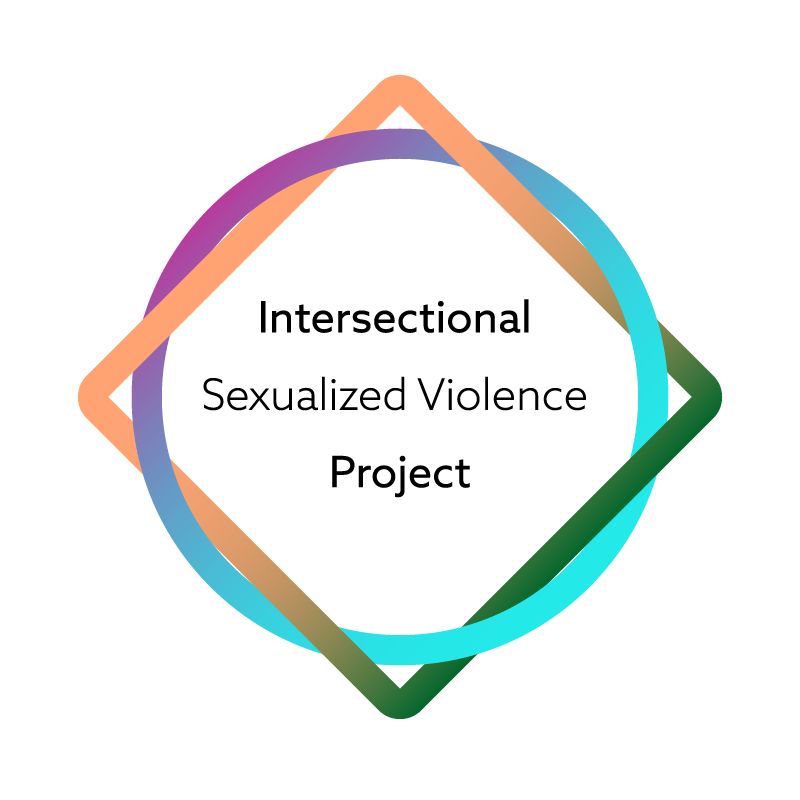
BCcampus and the Ministry of Post-Secondary Education and Future Skills would like to thank the many subject matter experts across the B.C. post-secondary system who contributed to the projects over the past several years.
BCcampus manages projects through collaborative leadership committed to meaningful engagement, accessibility, and trauma-informed facilitation. Committed to making learner success a priority, BCcampus focuses on learning, access, allyship, relationships, and knowledge sharing.
Warning: This section contains language, images, or content you may find disturbing; the subject matter is highly sensitive and can be triggering to those who have experienced trauma.
Training Resources
Synchronous Training Resources

A workshop and facilitation guide to support B.C. post-secondary institutions to prevent and respond to sexual violence. Accountability and Repairing Relationships is a series of four 90-minute workshops for people who have been informed that they have caused harm in the context of sexual violence. Designed for one-on-one or small-group facilitation, learners are guided through information and reflection activities to help them recognize the harm they have caused, learn how to be accountable, and develop the skills needed to build better relationships and support a safe and healthy campus. The slide deck that accompanies this resource can be downloaded from the Introduction.

A workshop and facilitation guide to support B.C. post-secondary institutions to prevent and respond to sexual violence. Active Bystander Intervention is a 90-minute workshop for all members of the campus community: students, faculty, administrators, and staff. This training helps learners acquire the knowledge and skills needed to recognize and intervene in an incident of sexual violence as well as discuss strategies for creating a safer campus community. It uses the 4Ds (Direct, Distract, Delegate, Delay) Active Bystander Intervention Model. The slide deck that accompanies this resource can be downloaded from the Introduction.
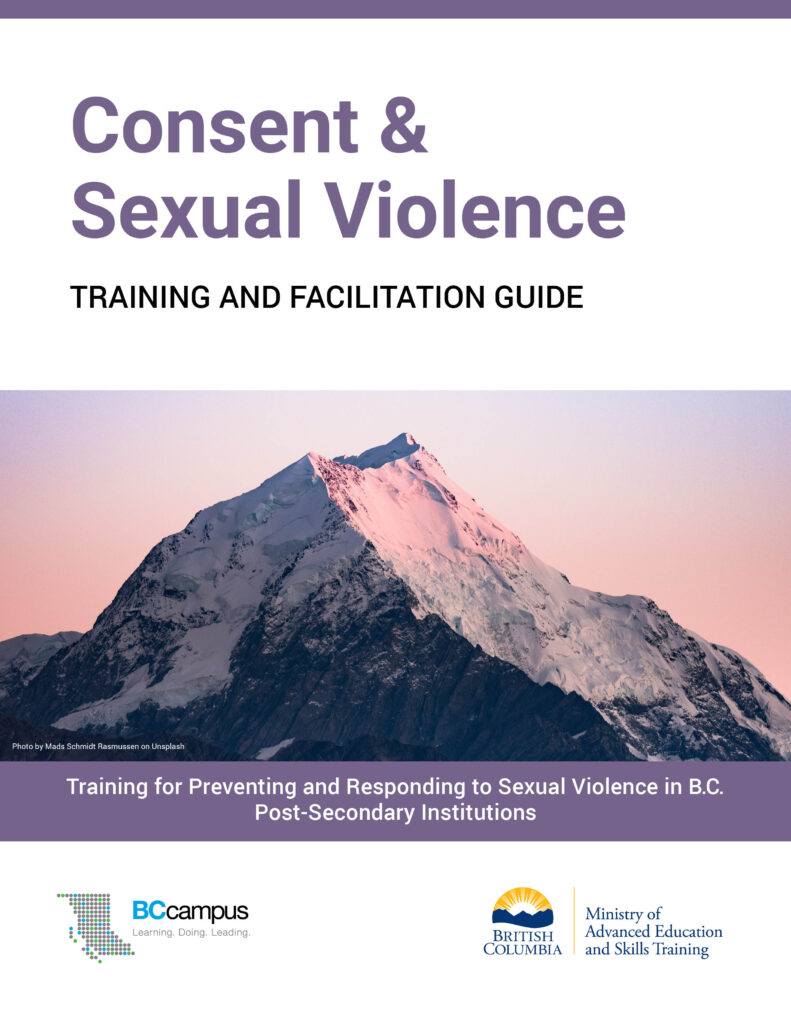
A workshop and facilitation guide to support B.C. post-secondary institutions to prevent and respond to sexual violence. Consent & Sexual Violence is a 90-minute workshop for all members of the campus community: students, faculty, administrators, and staff. This training explores different understandings of consent, including the legal definition. Learners have the opportunity to develop skills related to asking for and giving consent in all relationships as well as discuss strategies for creating a “culture of consent” in campus communities. The slide deck that accompanies this resource can be downloaded from the Introduction.
Power Dynamics and Boundaries: A Sexualized Violence Prevention Workshop for Graduate Students
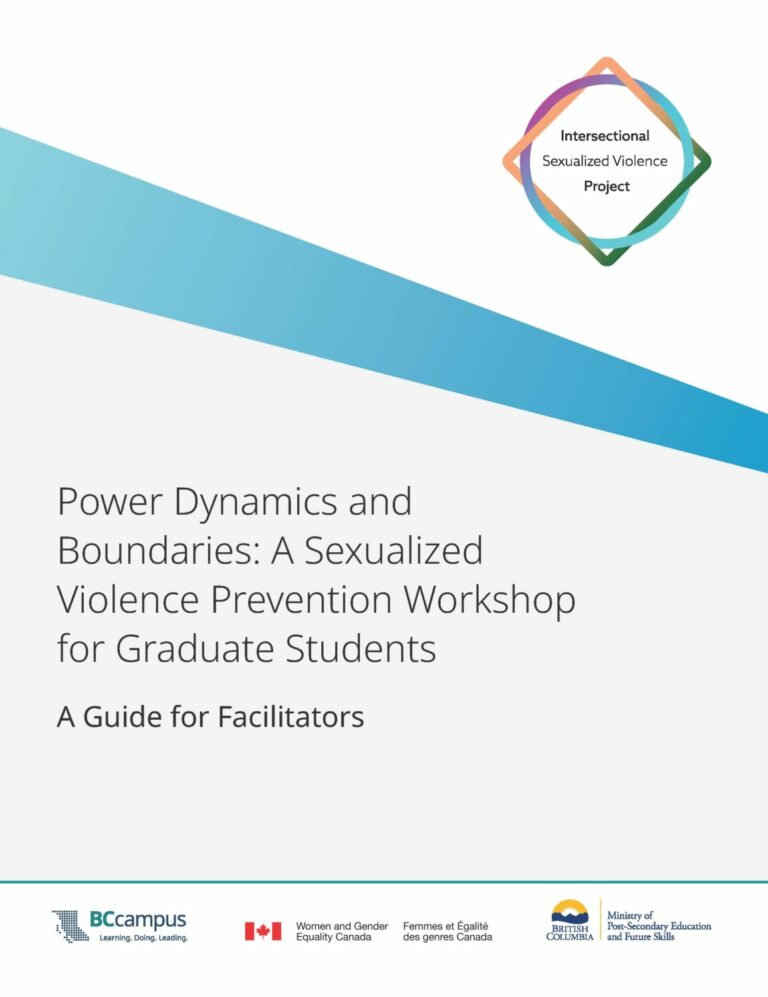
A facilitator guide and slide deck to help B.C. post-secondary institutions offer training on power dynamics and sexualized violence in the graduate student context.
This project was funded by Women and Gender Equality Canada.

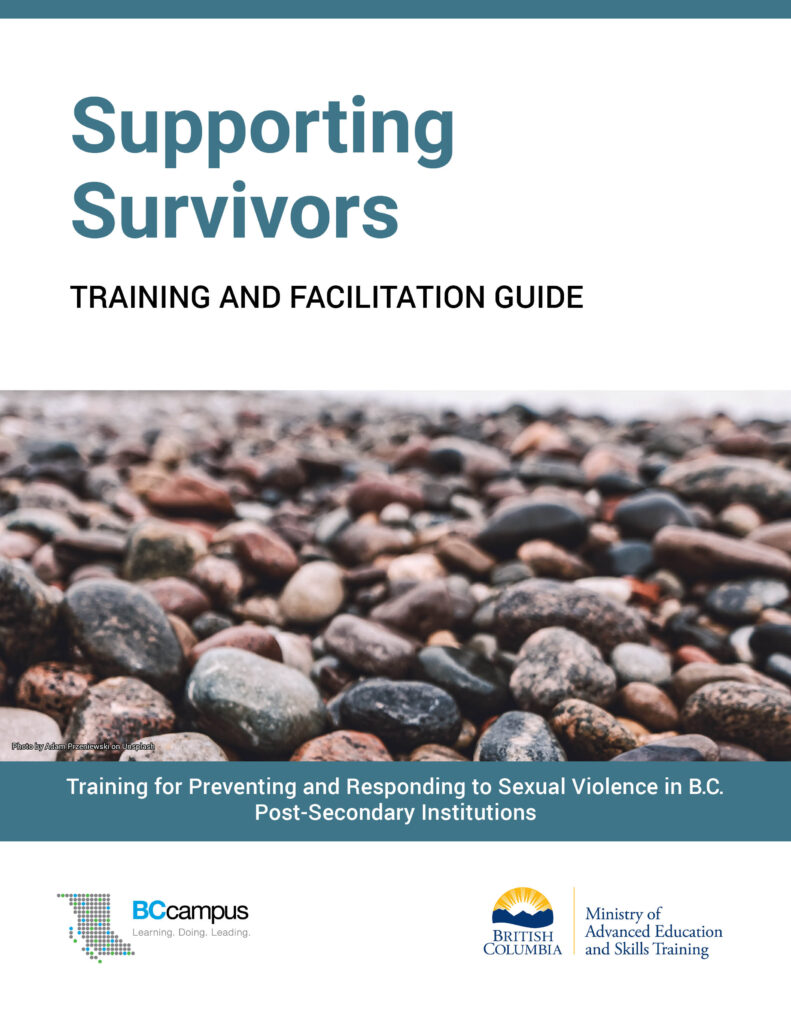
A workshop and facilitation guide to support B.C. post-secondary institutions to prevent and respond to sexual violence. Supporting Survivors is a 90-minute workshop for all members of the campus community: students, faculty, administrators, and staff. This training helps learners respond supportively and effectively to disclosures of sexual violence. It includes a discussion of available supports and resources, the differences between disclosing and reporting, and opportunities to practice skills for responding to disclosures. Uses the Listen, Believe, Support Model. The slide deck that accompanies this resource can be downloaded from the Introduction.
Asynchronous Training Resources
Communication, Healthy Relationships, and Consent: A Resource for B.C. Post-Secondary Institutions
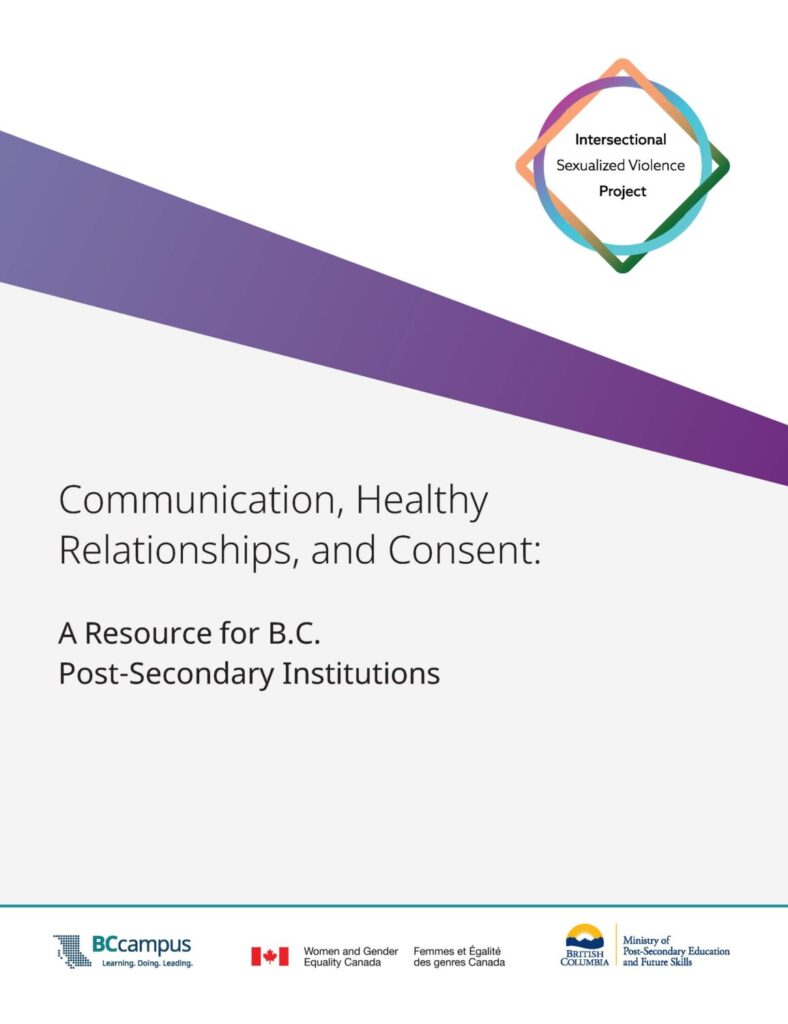
Communication, Healthy Relationships, and Consent is an interactive, self-paced online resource. Developed in H5P, this resource provides foundational training in healthy communication and relationships, boundary setting, and consent.
This resource is also available in six additional languages:
- Chinese Simplified: 沟通、健康关系与同意
- Hindi: कम्युनिकेशन, हैल्दी रिलेशनशिप्स, एंड कंसेंट
- Portuguese: Comunicação, relacionamentos saudáveis e consentimento
- Punjabi: ਗੱਲਬਾਤ, ਸਿਹਤਮੰਦ ਸੰਬੰਧ, ਅਤੇ ਸਹਿਮਤੀ
- Spanish: Comunicación, relaciones sanas y consentimiento
- Vietnamese: Truyền Thông, Những Mối Liên Hệ Lành Mạnh, và Ưng Thuận
This project was funded by Women and Gender Equality Canada.

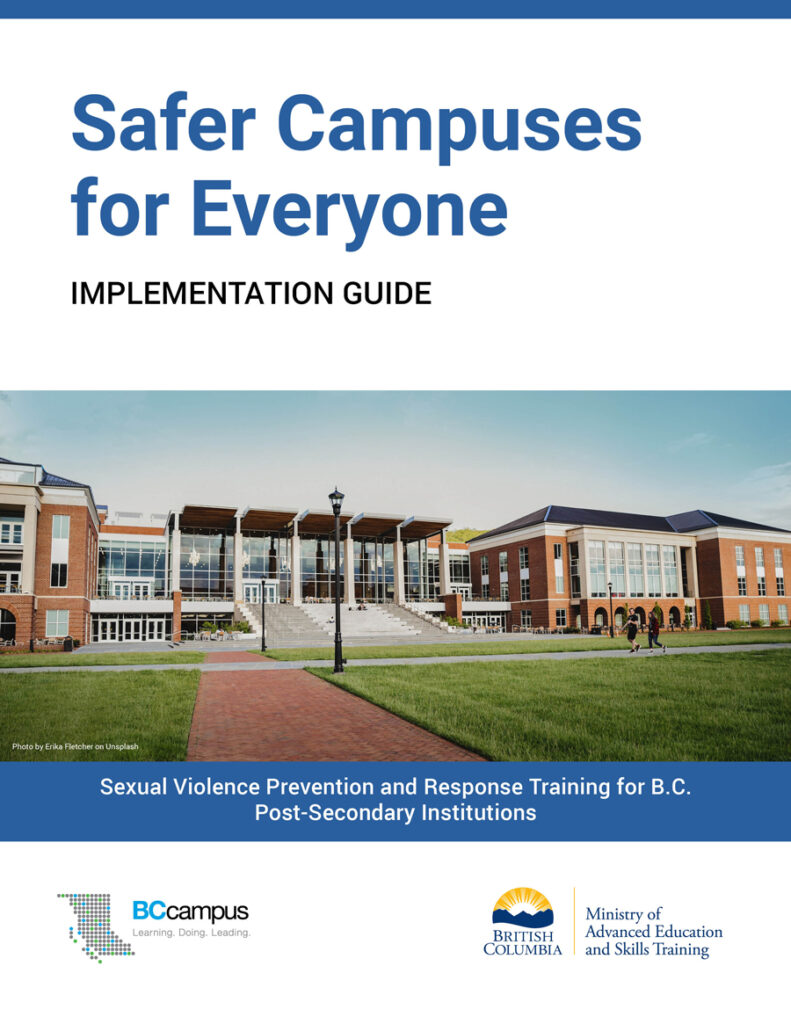
Safer Campuses for Everyone is a 75-minute online, self-paced, and non-facilitated training developed in an e-learning program called Articulate Rise. Individuals who work in B.C. post-secondary institutions can adapt the course content within the Articulate Rise program and then share the course with learners through a learning management system such as Moodle, Blackboard, Canvas, or D2L.
- View student course version: Safer Campuses For Everyone (Students)
- View staff course version: Safer Campuses For Everyone (Staff & Faculty)
- Request a copy using the form at the bottom of this page
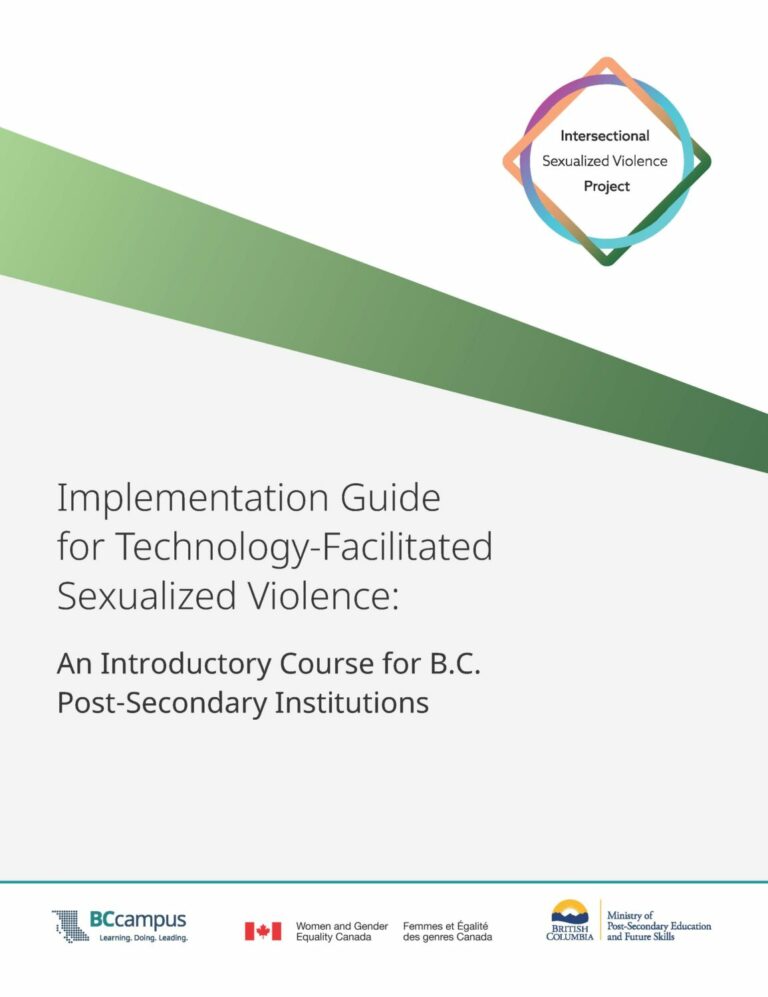
Technology-Facilitated Sexualized Violence Training is a 45- to 60-minute, self-paced online course exploring technology-facilitated sexualized violence (TFSV), its impacts, how to address it as a bystander, and how to support survivors of TFSV.
- View course: Technology-Facilitated Sexualized Violence
- Download: SCORM Package
- Request a copy using the form at the bottom of this page
This project has been funded by Women and Gender Equality Canada.

The Medicine of the Berry Patch: A Guide for B.C. Post-Secondary Institutions to Support Indigenous Students
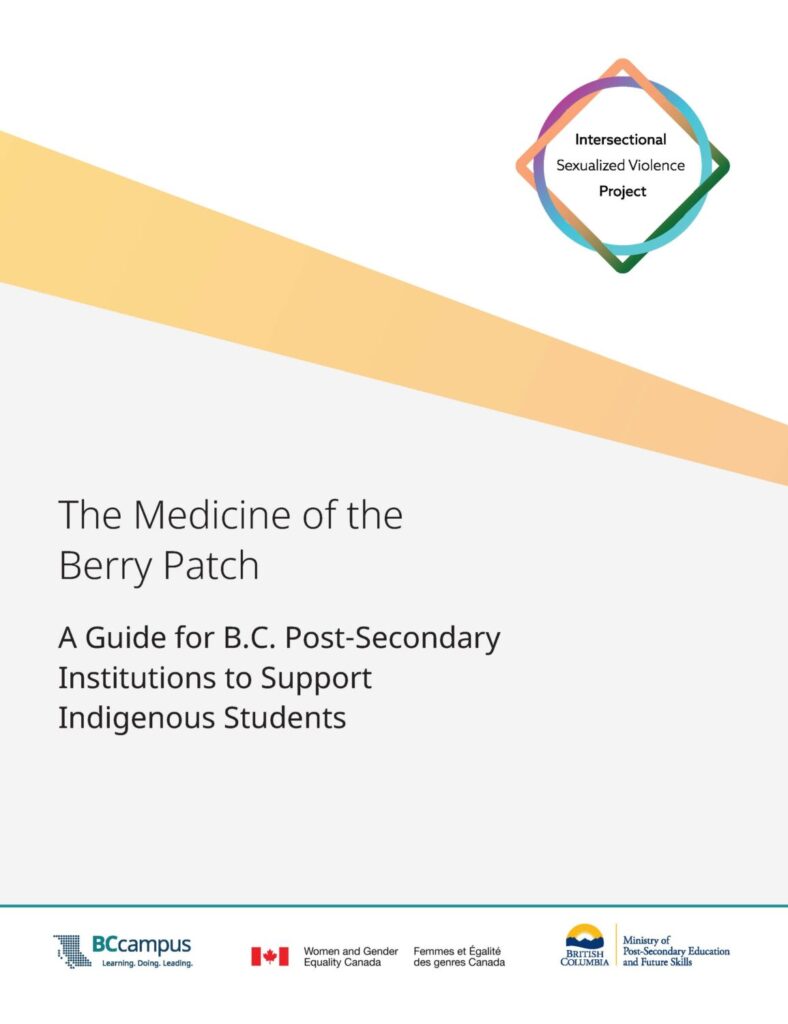
The Medicine of the Berry Patch is a call to action and self-paced online resource with videos, readings, and reflection questions for B.C. post-secondary institutions wanting to build support for First Nations, Métis, and Inuit students and survivors of sexualized violence.
- View the guide: The Medicine of the Berry Patch
- Watch: The Medicine of the Berry Patch video series by Jewell Gillies
This project has been funded by Women and Gender Equality Canada.

Supplemental Materials
Video Resources
- Module 1: Communication and Boundaries
- Module 2: Boundaries and Healthy Relationships
- Module 3: Let’s Talk About Consent
- Safer Campuses for Everyone Training: Welcome
- Safer Campuses for Everyone Training: Taking Care of Yourself
- Safer Campuses for Everyone Training: Taking Action on Sexual Violence
- Safer Campuses for Everyone Training: What Is Consent?
- Safer Campuses for Everyone Training: Listen, Believe, Support
- Safer Campuses for Everyone Training
Webinar Resources
- Accountability and Repairing Relationships: Part 1
- Accountability and Repairing Relationships: Part 2
- Active Bystander Intervention – Facilitator Workshop
- Consent and Sexual Violence Facilitator’s Workshop
- Evaluating Sexualized Valence Training and Resources: A Toolkit for B.C. Post-Secondary Institutions
- Intersectional Sexualized Violence Project: New Resource Showcase
- Moving Forward Together: Building Capacity to Prevent and Respond to Sexual Violence on Campus
- Moving Forward Together Panel: Creative Partnerships Conversations
- Moving from Men as Allies to Men as Stakeholders (January 27, 2022)
- Moving from Men as Allies to Men as Stakeholders (February 2, 2022)
- Preventing and Responding to Sexualized Violence through Sharing and Collaboration
- Supporting Survivors: A Skill-building Workshop for Students During COVID-19
- Supporting Survivors Facilitator’s Workshop
- Technology-Facilitated Sexual Violence: What It Is and How to Help?
- Technology-Facilitated Sexual Violence: What Rights Do Students Have?
- Trauma-Informed Facilitation
Request a Copy
Please ensure you have an Articulate Rise licence and use the email associated with that licence to receive a copy of any course.
